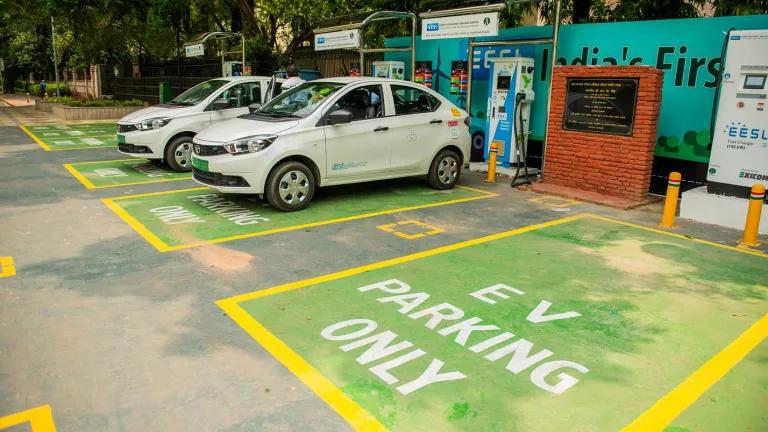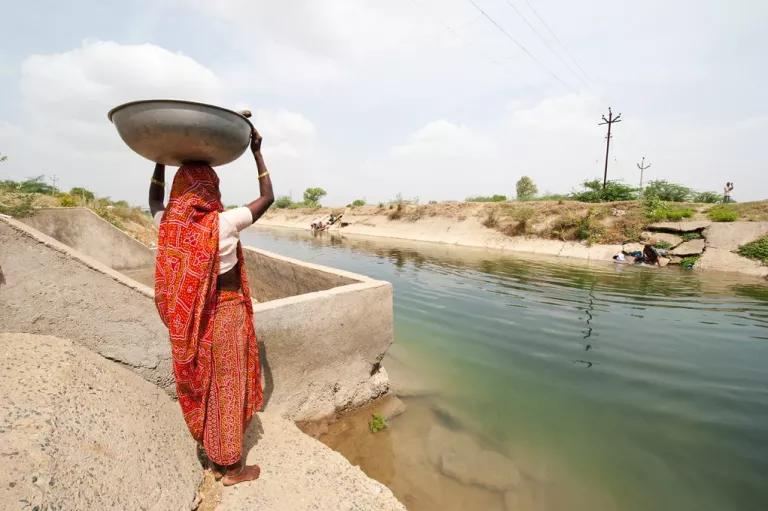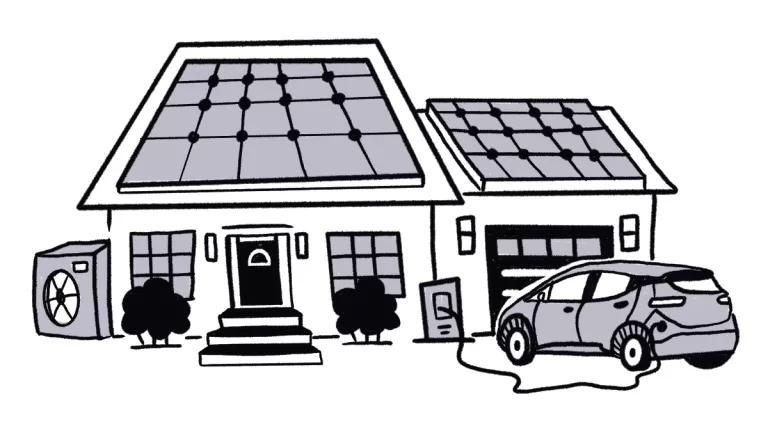India Makes Progress on Its Climate Goals
As countries from across the world come together this week for COP27, India continues to show that is is making solid progress on the climate goals it has set for itself.

Electric vehicle charging stations in New Delhi
Pradeep Gaurs/Shutterstock
As countries from across the world come together this week for COP27, climate discussions with a profound impact on the future of life on our planet, India faces a balancing act. The world’s third largest economy, with a growing climate footprint, is also home to millions of people vulnerable to environmental impacts. India is an influential voice in the global climate discussions where issues of equity, implementation, and ambition are expected to take center stage. NRDC and partners’ annual review, The Road from Paris: India’s Progress Towards its Climate Pledge, published today, shows that India continues to make solid progress on the climate goals it has set for itself even as the latest UNFCCC assessment urges all countries to do more if we want to have any chance of keeping warming to below 1.5 degrees Celsius.
Highlights of India’s climate actions:
- New National and International Policy Actions: In August, India formally updated its Nationally Determined Contribution, increasing its goal to reduce emissions intensity to 45% by 2030 compared to 2005 levels, and committing to achieving 50% cumulative installed power capacity from non-fossil fuel sources by 2030. Indian lawmakers also took a major step forward in reducing future carbon emissions with the Energy Conservation (Amendment) Act, The act mandates minimum renewable energy usage for industries, transportation, and commercial buildings, sets a minimum energy efficiency standard for all residential buildings, and establishes the framework for India’s first domestic voluntary carbon credit market. Earlier this year, India launched the Lifestyle for the Environment movement, urging a more sustainable way of living. At COP27, India is expected to call for lifestyle changes more widely.
- Continued Renewable Energy Expansion: India is expected to reach its near-term target of 175 GW renewable energy by mid-2023, and significantly expand renewable energy use in the years to come. Even as record-breaking heat-related increases in power demand in 2022 prompted India to expand coal production and delay the scheduled closures of several coal plants, domestic policy actions taken this year lay a strong foundation for accelerating India’s long-term renewable energy growth.
- Leaning into Green Hydrogen: India plans to be a global center for green hydrogen production and export. With a $75 billion investment commitment from the private sector and more than 25 green hydrogen plants in the pipeline by 2025, India is taking strides towards making green hydrogen a key strategy for lowering emissions in hard-to-abate sectors such as longer range and heavy-duty truck transportation, longer-term energy storage, and heavy industries like cement and steel.
- Expanded Energy Efficiency Focus: The 2022 Energy Conservation Act amendments broaden the scope of the Energy Conservation Building Code to set minimum efficiency standards not just for commercial buildings but also residential buildings. Ensuring energy-efficiency and climate-resilience in buildings is key to reducing India’s long-term emissions: buildings and industry already account for over 60 percent of India’s annual energy usage with estimates suggesting that about 70 percent of India’s 2030 urban infrastructure is yet to be built.
- Emphasis on Transport Electrification: By 2050, 75 percent of the passenger vehicles sales in India are expected to be EVs. India has made key progress on the EV infrastructure, with more than 2,877 publicly funded vehicle charging stations in 68 cities across 25 states and union territories, and 1,576 charging stations across nine expressways and 16 highways as of 2022. The government is also setting up charging stations at approximately 22,000 fuel pumps across India, making a charging station available at one in every three existing petrol pumps. India is also home to the third largest rail network in the world and is targeting a net zero emissions by 2030 goal through rapid electrification and transition to renewables.

A woman collects water from a canal in rural Gujarat
Hamish John Appleby/IWMI, CC BY-NC-ND 4.0
- Resilience to Extreme Heat: In 2022, India experienced months of record-setting temperatures, leading to soaring power demand for cooling and ushering in the worst power shortfall in six years. This perfect storm of challenges has harmed India’s most vulnerable the most. The crises brought India’s heat adaptation measures into the spotlight, especially the National Heat Guidelines developed by the National Disaster Management Authority, the India Meteorological Department, and partners. The guidelines expanded heat action plans to states and cities in India to provide local frameworks for advancing heat resilience. However, to scale efforts, such the women-led Hariyali Gram initiative, more investment is needed in adaptation and resilience as global warming leads to even more longer and severe heat waves.
Need for Increased Green Finance
More than $1 trillion in investment is needed to achieve India’s latest NDC by 2030. Even after a steep increase this year, India needs three and a half times the current levels to meet its 2030 climate goals and be on track for the 2070 net zero target. A new roadmap for Clean Energy Finance Investment, developed by the OECD and NRDC this year, identifies and addresses bottlenecks constraining financial institutions and investments, outlines opportunities to tailor market and policy interventions to unlock further private finance, and focuses on specific solutions for high-potential clean energy segments.
NRDC at COP

NRDC, jointly with UNFCCC and India’s MOEFCCC, are organizing an India-focused event.
The NRDC team will be in Sharm-el-Shaikh, actively tracking the negotiations. Here’s a list of key climate and clean energy experts and events that we are organizing. NRDC, jointly with UNFCCC and India’s MOEFCCC, are organizing an India focused event, Advancing Action on Heat Resilience and Climate Friendly Cooling, to bring together government and national actors from India and around the world to identify needs for implementing transformative heat and cooling solutions at scale in developing countries. To register, click here.




